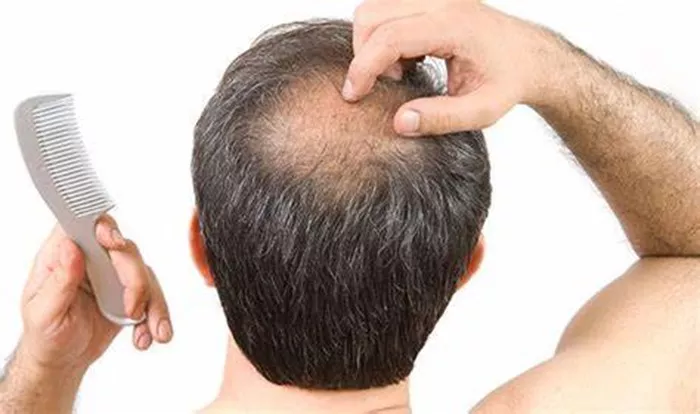Male pattern baldness (MPB), also known as androgenetic alopecia, is a common condition that affects many men as they age. Understanding when it typically begins, its causes, and how to manage it can help individuals navigate this significant change. In this article, we’ll explore the timeline of male pattern baldness, the underlying factors, and options for treatment and management.
Hair loss can be a sensitive subject for many men. While some embrace it, others find it challenging to cope with changes in their appearance. Male pattern baldness is not only common but also well-studied, providing insights into its onset and progression.
What is Male Pattern Baldness?
Male pattern baldness is characterized by a progressive thinning of hair on the scalp. It typically begins with a receding hairline and thinning at the crown. MPB is influenced by genetics and hormonal factors, making it a hereditary condition.
The Role of Dihydrotestosterone (DHT)
DHT, a derivative of testosterone, plays a crucial role in male pattern baldness. It binds to hair follicles, causing them to shrink over time. This shrinkage leads to shorter hair growth cycles and eventually results in thinner, weaker hair.
When Does Male Pattern Baldness Start?
Age of Onset
Male pattern baldness can start as early as the late teens or early twenties, although it may not be noticeable until the late twenties or early thirties. The extent and timing of hair loss vary widely among individuals. Here’s a breakdown of typical onset ages:
Late Teens to Early Twenties: Some men begin to notice thinning or a receding hairline during this period, although it is less common.
Mid to Late Twenties: Many men start to experience noticeable hair loss in their late twenties.
Thirties: By this age, a significant number of men show signs of male pattern baldness, with varying degrees of severity.
Norwood Scale Classification
The Norwood Scale is a classification system that helps identify the stages of male pattern baldness:
Stage I: No significant hair loss; the hairline is in its normal position.
Stage II: Slight recession of the hairline, typically around the temples.
Stage III: More pronounced recession and thinning at the crown.
Stage IV: Thinning of hair on the crown and a deeper recession of the hairline.
Stage V: Significant hair loss, with distinct bald patches.
Stage VI: The bridge of hair between the two sides of the scalp is gone.
Stage VII: Extensive baldness with only a narrow band of hair remaining on the sides and back.
Genetic Factors
The onset and severity of male pattern baldness are largely determined by genetics. If you have a family history of hair loss, you are more likely to experience MPB. Research suggests that specific genes contribute to how your body reacts to DHT.
Factors Influencing the Onset of Male Pattern Baldness
1. Genetics
Genetic predisposition is the most significant factor in determining when male pattern baldness begins. If close relatives have experienced early hair loss, you may be more susceptible.
2. Hormonal Changes
Hormonal changes, particularly those involving testosterone and DHT, play a critical role in hair loss. Men with higher levels of DHT may experience earlier onset and more severe hair loss.
3. Health Conditions
Certain medical conditions can influence hair loss. Conditions such as thyroid disorders, iron deficiency, and autoimmune diseases can contribute to or exacerbate hair thinning.
4. Lifestyle Factors
Lifestyle choices can also affect hair health. Poor diet, stress, smoking, and lack of exercise may contribute to premature hair loss.
5. Environmental Factors
Environmental factors, such as pollution and exposure to certain chemicals, can impact hair health and potentially trigger hair loss.
Recognizing the Signs of Male Pattern Baldness
1. Thinning Hair
A gradual decrease in hair density, especially on the crown or at the temples, is often the first sign of MPB.
2. Receding Hairline
A noticeable recession of the hairline, particularly at the temples, is a common indicator.
3. Increased Hair Shedding
You may notice more hair in your brush or on your pillow than usual, indicating increased shedding.
4. Changes in Hair Texture
Hair may become thinner and less resilient, leading to increased breakage.
Managing Male Pattern Baldness
While male pattern baldness is a natural process, there are various options for management and treatment:
1. Topical Treatments
Products containing minoxidil (Rogaine) are FDA-approved for treating hair loss. They can help promote hair regrowth and slow down hair loss when applied regularly.
2. Oral Medications
Finasteride (Propecia) is a prescription medication that can help reduce DHT levels, slowing hair loss and promoting regrowth.
3. Hair Transplant Surgery
For those seeking a more permanent solution, hair transplant surgery can redistribute hair follicles from areas with dense growth to balding areas.
4. Lifestyle Changes
Maintaining a healthy diet rich in vitamins and minerals, managing stress, and avoiding smoking can contribute to overall hair health.
5. Hairpieces and Wigs
For those uncomfortable with their hair loss, hairpieces and wigs can provide a cosmetic solution.
Conclusion
Male pattern baldness is a common condition that can begin as early as the late teens or early twenties. Understanding the signs, causes, and treatment options can empower men to address their hair loss effectively. If you are experiencing significant hair loss, consulting with a healthcare professional can provide guidance tailored to your situation.
Related topics:
- When to Worry About Hair Loss: Understanding the Signs
- Telogen Effluvium: When It Starts and What to Expect
- What Is the Best Hair Restoration Method


